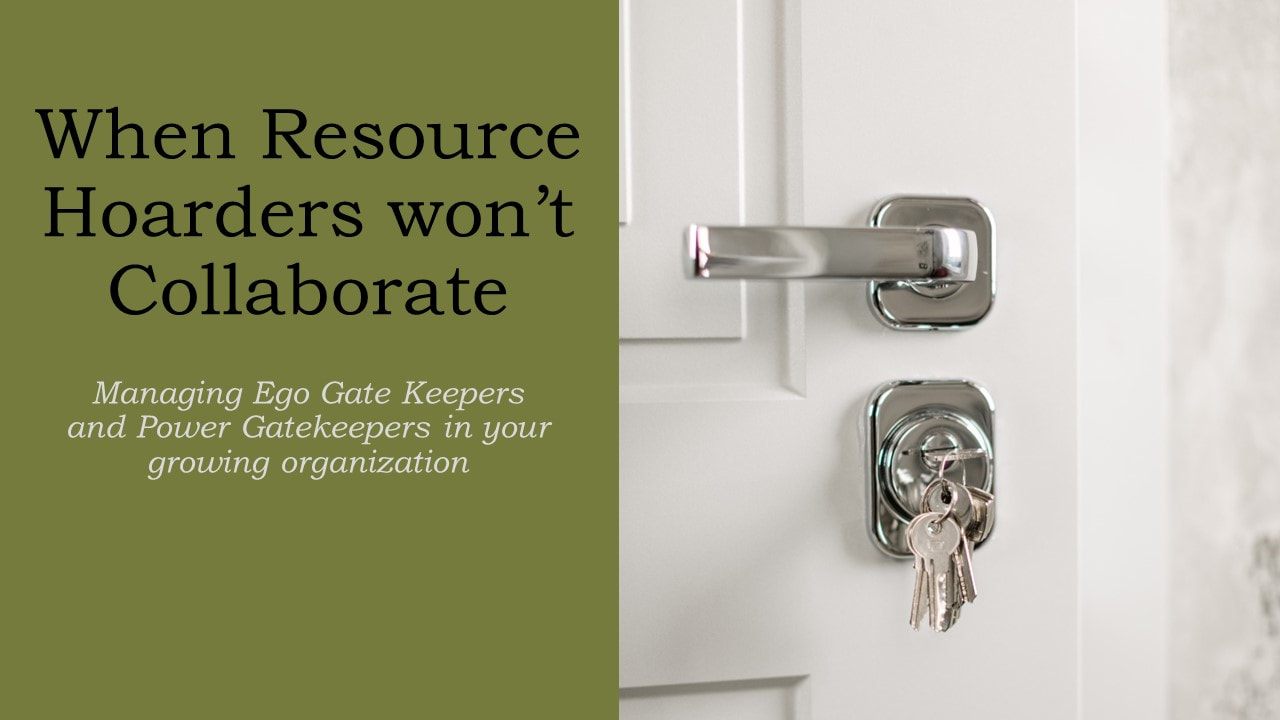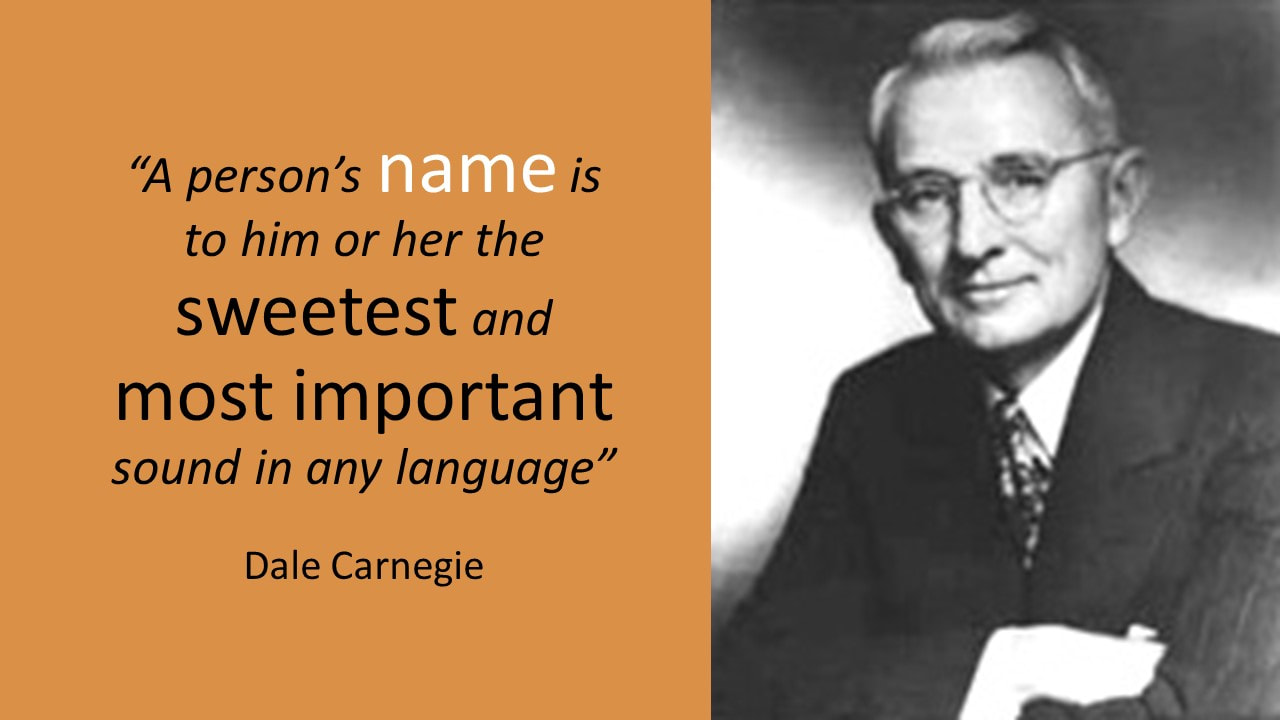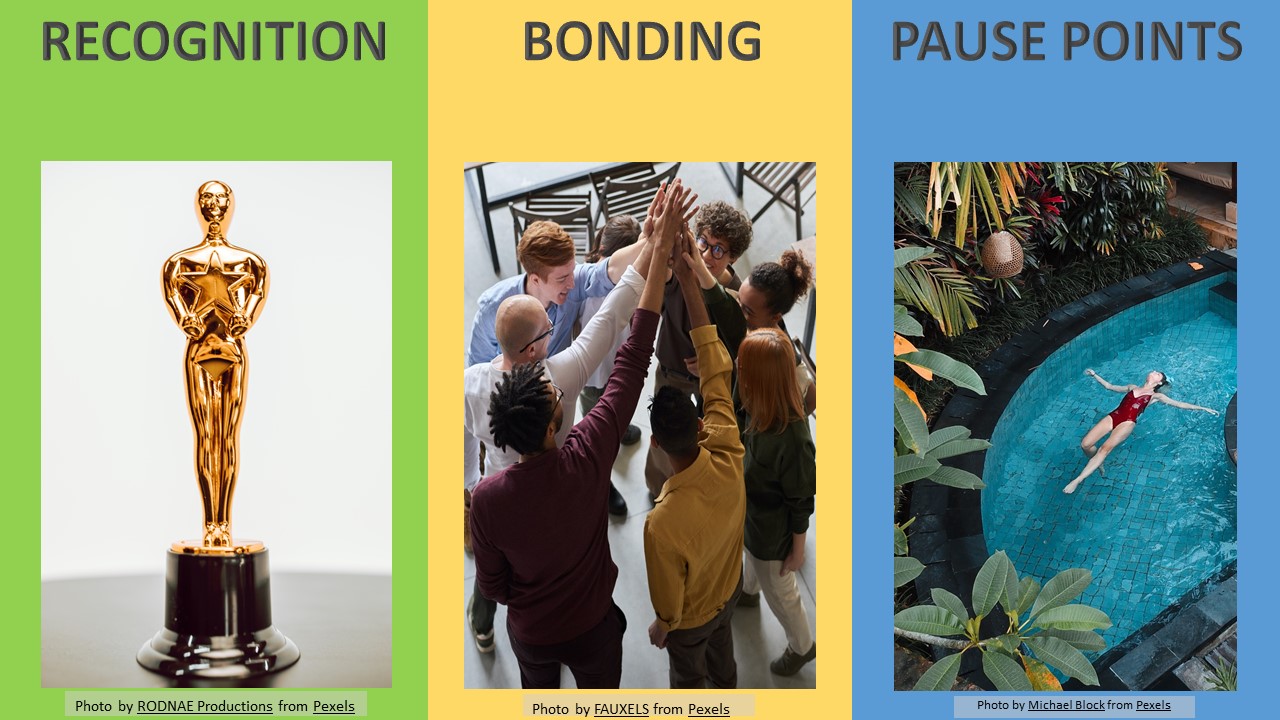|
When you thank someone else, they benefit from your expression of gratitude, but so do you. In fact, your boosted brain chemistry is
Engage in good self-care this season by expressing gratitude to those around you. The Gratitude Bump improves your success and satisfaction by changing your brain chemistry and by changing the brain chemistry of others. Thanking others is the best way to care for yourself this holiday season. #GratitudeBump #leadership #selfcare
0 Comments
Many of us feel distanced from our legislators. We don’t see them at the supermarket; we know highly paid lobbyists have access to their calendar. In fact, legislators LOVE meeting their constituents. Getting and preparing for a meeting with your legislator is quite similar to - and even easier than – getting and preparing for a job interview.
1. Prepare Preparing for a meeting with your legislator is simple. As the one calling the meeting, you get to set your agenda.
Similar to a job interview, doing your homework is key to your success. With legislator meetings, you have the bonus of bringing your team of experts with you (wouldn't that be nice for an interview!). Being succinct and clear improves your influence. 2. Set it up Request your meeting in writing; follow with a phone call. Note your issue (including bill number) and clearly state you are a constituent. Call the day before to confirm your meeting and:
Making a good impression with staff helps your success. Some organizations give employees equal say in hiring decisions. Similarly, most legislators rely on their staff to prioritize their time. Make a good impression for higher priority. In general, legislators love to meet constituents, making getting a meeting with them easier than getting most job interviews. 3. Perform Greet Staff Respectfully. Set a positive tone with everyone you greet on your visit to ensure your impression is positive. Introduce yourself to your legislator using your full name and where you are from. Address your legislator by their appropriate title (ask their staff or use this Emily Post list of honorifics). Thank them for their time and for meeting with you. Create Connection and Be Succinct. You will likely have 10-20 minutes to:
Listen. While you are there to be heard, you will better promote your cause if you also listen well. Ask for your legislator’s thoughts and experience on the topic (think “discussion” rather than “lecture”). Unlike interviewers, legislators will likely share people, places, and experiences with you. Building a positive relationship while succinctly focusing on your key message and asking good questions in an interview helps you land a job. These same skills improve your ability to advocate for your cause. 4. Nail the close Before leaving, thank those who met with you for their time and the meeting. Leave materials that are easy to comprehend at a glance. Promise to follow up where you can, such as sharing an article or resource. Ensure you have accurate contact information and perhaps permission for a group photo or social media post. Closing with next steps in mind grows your success with your legislator just as in a job interview. When thanking them, mention what you especially enjoyed learning and how you might follow up on something discussed. These strategies help with interviews, meetings with legislators, and all other interactions. 5. Follow up Build on your meeting by following up well. That evening, send a thank you email and follow with a handwritten thank you note. For social media posts:
A thank you that includes promised information, contacts, or resources builds on your positive impression for both interviewers and legislators. When you leave the meeting, you leave an impression that will start to fade. An email within 24 hours creates a ping to that memory that keeps it fresh. The handwritten thank you note provides another ping several days later, keeping you and your cause fresh in their mind. Effective follow up grows connection and keeps your meeting fresh in their memory, maximizing your impact with interviews and legislators alike. Most legislators love to meet with constituents. Taking steps to make interviews successful directly translate to maximizing your impact with legislators. The added bonuses are that you can bring a team and post on social media. Following these steps will build positive relationship with and increase your influence over your legislators. Photo credit: Ramaz Bluashvili Create your own Gratitude Bump* by using someone’s name when thanking them. Even better, teach your children to do so for these three reasons.
Going back to school invites many opportunities to say “thank you,” to friends, family, neighbors, sitters, childcare centers, coaches, camp counselors, and, of course teachers and staff at your child’s school. We parents benefit from a reminder to “say thank you” to the many in our village who make successful parenting possible. More powerful, however, is the reminder to train our children to say thank you. The growing body of research on the benefits of expressing gratitude show that training our children to say thank you improves their academic and social success and their mental and physical health. As a parent, I appreciate how saying thank you makes them generally more pleasant to be around! These benefits comprise the Gratitude Bump* – the improvement to every area of their lives when they express gratitude. The Gratitude Bump* offers immediate and long-term benefits, and is limitless. You can layer Gratitude Bumps* on each other for ever-increasing benefits. You create the Gratitude Bump*, by using four key elements when expressing gratitude. One of these elements is saying someone’s name when thanking them. Saying someone’s name creates the Gratitude Bump* for three reasons. 1. Magic Words Your mother might have told you that “please” and “thank you” are the magic words, but there is a special magic in using someone’s name. People like hearing their own name. When you use their name, it is like a magic formula to endear them to you. Dale Carnegie’s famous insight, “A person’s name is to him or her the sweetest and most important sound in any language,” stresses the value you can create in that moment. That magic lasts in the long-run, too. Since their name brings strong, positive value to the conversation, you also increase the attention they give you. They will focus more intently on you and what you have to say. Thus, using their name is sort of a call to attention, and is most effective toward the beginning of your expression of gratitude or at any point you want them to listen to you closely: “Maria, thank you for…” “Thank you, Sam, for…” or “…so what I am saying, Jacinda, is thank you…” Saying their name directs their attention toward you and creates a positive connotation for what you are saying. The benefit survives the interaction, creating goodwill that lasts in the long-run. For children, this means their teachers, classmates, and community give them better attention in the moment and thinks more positively of them over time. 2. Focus on Gratitude Saying their name triggers your mind to focus on them. In that moment, your mind focuses on the other person and that you are grateful not for your receiving a gift, service, or kind word, but for their act of doing so for you. Focusing on the other person helps increase the Gratitude BumpTM by turning your focus outside of yourself. According to the UCLA Semel Institute for Neuroscience and Human Behavior, This shift in thinking creates an immediate positive chemical shift in your brain chemistry that lasts beyond the conversation, providing short-term and long-term benefits. Most children are ego-centric. Training them at a young age to focus on others helps develop empathy, important for life-long success, and creates a habit of expressing gratitude, which also is important for life-long success. 3. Connection Builds Trust Saying their name builds trust and connection because they will perceive your expression as being more personal and more sincere than they would if you did not say their name, regardless of your actual level of sincerity. Increasing your personal and sincere communication helps that person hold you in higher esteem for longer, therefore improving your relationship with this friend, colleague, or teacher – yet another way in which using a person’s name in a thank you creates a Gratitude Bump.TM The immediate benefit of perceiving your interaction as more sincere and personal lasts long-term, too. Teachers and classmates who see your children as more sincere and personal will develop more trust in your children and build stronger relationships with them. Stronger social circles result in stronger academic success and greater satisfaction with school. A Word of Caution One caveat is that, as with all methods of communication, this one can be overdone. Overusing someone’s name tends to come across as sounding insincere or “salesy.” In a short thank you, saying someone’s name once is usually sufficient, and perhaps again as you close your conversation. Use your judgment to ensure you are making this tool part of your natural repertoire rather than adopting a message that sounds formulaic, and when training your children to adopt this element of saying thank you. Conclusion Children benefit at least as much as we do from saying someone’s name when expressing gratitude. It helps others focus and makes their attention more positive, puts your children’s mind in a healthy place while building empathy, and builds stronger relationships with teachers and peers. Teach your children to say someone’s name when expressing gratitude. They will create their own Gratitude Bump* to improve every area of their lives both immediately and in the long-run.  Can Resource-Hoarders Thrive in a Collaborative Work Environment?
To answer this question, you must first understand what drives their hoarding behavior. Resource-sharing increases productivity and collaboration. Resources such as access to physical or digital space, information, support teams, and cash make collaborative work environments run smoothly. However, some prefer to guard rather than share resources others need to perform. Those who guard resources often want something in exchange for providing access to the resource. They use the resource as currency, creating barriers to access and positioning themselves as gatekeepers. This gatekeeper mentality can clog the wheels of even the smoothest business systems. Understanding the big picture is the key to building a collaborative work environment. In Collaborative Leadership, Oxford Leadership Fellow Thomas J. Hurley notes that shifting from a “me” mindset to a “we” mindset is essential for collaborative work environments. But not all gatekeepers are open to making such a shift. I worked with one multinational corporation that experienced a weekly loss of $40,000 in short-term investment returns so that one field office could save $4,000. Let me explain: At the close of business each day, every field office forwarded its daily cash to the short-term investment group at corporate headquarters. While no single office held enough cash overnight to warrant investing the funds, the dividends were significant when the company pooled those funds to invest. One day, the short-term investment group noticed that one of the field offices was forwarding significantly less money to the pool. In response to their inquiries, the field office manager proudly explained that he had made the office’s financial operations more efficient, realizing significant savings of $4,000 per week. But the $4,000 saved cost the company more than $40,000 in short-term investment returns each week. To rectify the situation, the field office manager would have to dismantle the work he had just completed. How to best approach him with this request depends on whether he is an Ego Gatekeeper or a Power Gatekeeper. Managing Ego Gatekeepers Ego Gatekeepers, as the name implies, focus on building their ego. They want to know that others see them as important, valuable contributors to the organization. They like to think of themselves as indispensable to the organization's success and seek public approval. The most effective way to approach an Ego Gatekeeper with a request is to:
Managing Power Gatekeepers Power Gatekeepers focus on building and preserving power. They want power over their role and as much power over others as possible. The organization's success does not concern them. The most effective way to approach a Power Gatekeeper with a request is to:
As organizations grow, the need for collaborative work and resource-sharing grows. Teams that focus on the “we” are essential for long-term success because they share resources to best serve the organization. Team members who cannot move past the “me” mindset, hoarding resources as currency, quickly become detrimental to the organization. Managing Ego Gatekeepers and Power Gatekeepers requires deliberate attention to promote collaboration. It is often easier to shift Ego Gatekeepers to a “we” mindset, thus improving collaboration and resource-sharing. But when the “me” focus of your Power Gatekeepers disrupts your “we” environment, encouraging them to leave for another organization is often best for everyone. How to Celebrate Accomplishments Using Gary Chapman’s 5 Love Languages to Celebrate Your Teams You want to thank your team for their hard work on a special project. Should you throw a party? Give gift cards? A day off? Different people receive acts of appreciation differently. The way to maximize the impact of your recognition is to know your team and know what they like. Gary Chapman’s The 5 Love Languages spells out 5 simple ways people feel appreciated and can help reveal how to reward and motivate your team. His context is family relationships, but his lessons translate well to the work environment. Chapman identifies the love languages as Acts of Service, Receiving Gifts, Words of Affirmation, Quality Time, and Physical Touch. The latter two, of course, require careful consideration when adapting to the work environment. Some of these create the best impact when combined, as you will see. 1. Acts of Service Acts of service include doing tasks for someone that alleviates their burden, even if lightly. For these people, bringing them a cup of coffee, or bringing their mail to them warms their heart. They might provide acts of service to others to show their gratitude (unless they are just savvy at identifying Acts of Service as another’s love language), and will show genuine pleasure when you or others perform acts of service for them. If your team worked hard providing financial data needed to close a merger but their regular end of month data is still to be compiled, any steps you can personally take to facilitate that effort is helpful and meaningful to the Acts of Service crowd. Note: simply hiring someone else to relieve them of their work is nice, and a gift on its own, but lacks the same meaning to this group of people as if you did it yourself. It is the personal extension of your own time and effort that has meaning for them. Say your juicing store held an event that kept your team outside serving customers. Starting on what would normally be their inside cleanup shows your gratitude for their effort, and means the world to Acts of Service types. As they wrap up their big project outside, you can share a thank you and share they news that you cleaned up inside so they are free to go. Be sure to communicate that you did that as a thank you to them to get the full impact (otherwise they might think that your cleaning up inside is the new normal for big events). Other acts of service include:
Basically, doing any work you might think is beneath you will bolster the morale of your team and is considered an act of service. Hosting a dinner that you prepare and serve (perhaps you like to BBQ?) can mean the world to your Acts of Service team members. Putting personal thought and effort into creating an experience for your team means much. Make sure your act of service is an act of service rather than an act of indulgence. The point of your focus should be not on your ego but on your team’s sense of feeling appreciated and celebrated. 2. Receiving Gifts Token gifts of gratitude demonstrate thoughtfulness and are often stored like trophies. The Receiving Gifts lover is easy to identify as their desk or office is likely full of memorabilia with associated stories eagerly shared when asked; they might wear necklaces, lapel pins, or cufflinks that are mementos from special events or people. Plaques, photos, or photo frames recognizing effort or participation in company events are proudly displayed. Things carry the importance of the giver and the story behind them. The more personal the gift, the more meaning it carries. If your team is small, or you are thanking just one person for their effort, an individual gift will easily suit that person. Keeping consistency among team members though, helps to reinforce the team identity. Gifts can be delivered in a way to give them greater meaning. A public speech when granting a gift, or a personal note accompanying it will deepen the meaning for the recipient. When coupled with another Love Language (Words of Affirmation or Quality Time), the impact of the gift can be quite powerful. 3. Words of Affirmation Affirmation or praise can powerfully impact this group. If you see someone smile, blush, or express deep gratitude in response to praise, this might be someone whose love language is Words of Affirmation. Words of affirmation take two forms: private and public. Public affirmations make the person you are recognizing feel appreciated, and shows the team how you value that person. This helps the team learn to see additional value in each other. The award of most valuable player is a public recognition at the close of a game or season. The award helps other players identify what it takes to become the most valuable player. Granting the award comes with a description of why the person won it, with concrete examples of their behavior that made them valuable. For people who cherish Words of Affirmation, creating their moment in the sun gives them a boost for years to come. Combining words of affirmation with a physical gift of a plaque or other memento helps to memorialize the valued words. Private affirmations are helpful to reinforce what you have shared in public, and not all words of praise need or should be shared publicly. A quick one-on-one chat in passing can include a brief expression of appreciation that will motivate this worker for time to come. A reply to any report or communication that includes appreciate for the effort your team member contributed goes a long way to their feeling appreciated. 4. Quality Time (use with caution) We have all seen it. The favorite associate being taken to lunch by the V.P.; casual conversations in the boss office where there is laughter and storytelling – clear bonding. These interactions can smack of favoritism for reasons other than performance, but also create opportunities for the boss to learn from the team. Thus, such time is helpful when shared equally. At an event, take time to interact with each team member (when possible). At least visit each table, making eye contact and interacting with each person present at the table. If the event is too big to meet with everyone in a meaningful manner, add smaller team events where you can interact more closely. In a public space, you can still create one-on-one conversations with good eye contact and respectful posture to build connection. If shared over a meal, all the better. Including different team members in your golf round at the annual retreat works, too. Ensure that your behavior and circumstances are strictly professional and not misinterpreted. Quality Time folks see such time as proof that they are important and are valued. Know your team before launching expensive celebrations. Company-wide parties are sometimes perceived as wasteful, being so broadly shared that they lack personal gratitude. Ensure any large group gathering serves the purpose of celebrating those team members you want to feel appreciated, and does not appear to be your personal party for your own friend circle. If you want to treat team members to special outings, follow these tips to keep Quality Time effective and professional:
If you only take individual team members of your own gender on one-on-one events, you risk creating resentment or subjecting yourself to hostile environment claims. Ensure the access you create for some is appropriate for all, and then provide it to all. 5. Physical touch (use with extreme caution) People who respond to physical touch do so because this creates connection and bonding for them. When they are connecting with someone else, they feel a sense of belonging and appreciation. This love language is most often addressed in romantic relationships, making it a sensitive topic for the professional environment. Professionally, handshakes are the safest and most effective method of communicating gratitude through touch. A hearty handshake with good eye contact and words of appreciation will carry great weight with those who value physical touch. At the close of a big project, handshakes all around are a great idea. Be sure to make the most of that moment by making eye contact, smiling, and expressing your gratitude and congratulations. With people we see daily in the office, we rarely use gestures in our greetings, which can give them greater significance at the close of a project. Avoid the temptation of saying “I’m a hugger,” and expecting others to welcome your hugs. Handshakes are the safest form of touching in a professional environment. If someone responds to your attempt to shake hands by presenting a fist bump, high five, hand-on-heart, or other, more limited gesture, respect that gesture and respond in kind. If your goal is to express gratitude and create a bond, responding to their gesture will be most effective at reaching that goal. Combine Love Languages for Effect As you learn your team’s love languages, you can create moments of celebration that check off everyone’s need to be appreciated. Margaret Thatcher used to cook dinner for her ministers in her home. I know other leaders who BBQ dinner for their teams, donning an apron to serve others. But acts of service can include making something specific for team members, personally arranging something they would appreciate. You can include a public toast recognizing each team member, individual conversations throughout the night, and send people home with a special thank you gift and heartfelt handshake, and you will have touched every team member’s needs in some form. The better you know your team’s love languages, the more closely you can tailor the event to making them feel appreciated. ******** Once you recognize the need to celebrate your team, Identifying the love languages of your team members will help you celebrate and motivate them. Creating moments where several languages can be combined to express gratitude and appreciation, as part of a team celebration, improves talent retention through bonding.dentifying the love languages of your team members helps you celebrate and motivate them. Creating moments where several languages can be combined to express gratitude and appreciation, as part of a team celebration, improves talent retention through bonding.  Celebrating the close of a successful year with a team lunch - the first time the team had met in person due to the pandemic. I treated them to a lunch where they shared reflections on the year and I shared special contributions each member brought to the team. Throughout the year, I sent gifts in the mail to team members, such as a box of gingerbread mix, since they could not meet in person. Gifts of sunscreen might have been nice for this lunch! I also gave public recognition for their contributions throughout the year. A volunteer group (not an employment relationship), everyone hugged as we departed. When you have lived as long as I have (please don’t ask…), the phrase “He’s a good guy” becomes a bit of a red flag. It is often used to defend someone who is good to the speaker but not so good to others, particularly those in another demographic group. The phrase can imply that perhaps the target deserves the harassment for some reason – they must be a difficult person.
In their hbr.org article, Stop Protecting “Good Guys,” Resa E. Lewiss, MD, W. Brad Johnson, David G. Smith, and Robin Naples, M.D. articulately describe the problematic nature of the “Good Guy” defense for workplace harassment in STEMM industries, and offer suggestions for addressing the problem. Their affirmative steps to improve situational awareness are helpful. They also recommend checking your own impulse to gaslight and behave differently. My husband, a retired physician, taught me the phrase “check your own pulse first,” which I would add to their recommendations. When you want to gaslight by using the “good guy” defense, ask yourself, “Why do I feel the need to defend this behavior?” Explore your own feelings before considering the other players. Check your own pulse first, then check theirs. Having empathy exclusively for a harasser will hurt the person harassed, will hurt you and your organization, and will ultimately hurt the harasser. Try to develop empathy for the “other’s” perspective, especially if you are inclined to use the “good guy” defense for what you know is problematic behavior. When someone is good to you, that does not necessarily mean they are good to all. On a lighter note, as a retired attorney, I noticed these authors focused on STEMM industries. They may have left out the legal field because it is not a science, or maybe because you just don’t often hear people describe lawyers – in any circumstances – as “good guys.” We tend to get a bad rap! Take a moment to read this article and take your own pulse to see if you rely on the “Good Guy” defense when you should not. Have you been asked to write a letter of recommendation? Was it…
- to recommend a colleague or someone you supervised? - as ghost writer for your supervisor to recommend a coworker? - for yourself when you asked for a letter of recommendation? When I receive an uptick in queries about letters of recommendation, it means more people are closing in on positions, which is great. What can be tough is navigating the delicate world of letters of recommendation. Two articles nicely address important issues for drafting letters for yourself or others: When Someone Asks You for a Reference by Rebecca Knight in HBR at https://hbr.org/2015/10/when-someone-asks-you-for-a-reference And How to write a letter of recommendation – for yourself by Dr. Adaira Landry & Dr. Resa E. Lewiss in Fast Company at https://www.fastcompany.com/90757084/how-to-write-a-letter-of-recommendation-for-yourself Key takeaways are: 1. Give Context Establish how the letter signatory knows the person being recommended 2. Give Data Save superlative conclusions about character for your close. For the body of your letter, provide objective accomplishments that show someone’s capabilities. 3. Be Honest Preserve your reputation and only write a letter if you can truly recommend the person. Conversing with the requester about strengths and job requirements will help you decide if you want to put your name on the line. Politely refuse if you would not hire the person for that role. If someone writes a letter of recommendation for you, be sure to follow up with a thank you and an update on the position. If they care enough to write the letter, they surely are interested in the outcome. What are your experiences requesting or writing letters of recommendation? Highly Stressed and Highly Depressed – Onboarding Today’s New Hires Requires New Approaches6/16/2022 An increasing number of young adults struggle when adjusting to new work environments. These 4 steps will help your new hires succeed.
The United Nations and the World Health Organization warn that emerging adults will suffer increasing mental health issues for the next 10 years. Adjusting HR practices will improve the onboarding of new hires. Four important steps will help these new hires succeed in your organization: know your audience, reset expectations, deliver bite-sized instructions, and repeat often. 1. Know your audience Employers have complained that over the last 20 years, new hires have worsened at adjusting to professional workplaces, showing difficulty engaging with colleagues, clients, and supervisors. The Coronavirus pandemic grossly accelerated this trend by increasing the percentage of youth and young adults experiencing mental health issues.
If you hire young adults, know that an increasing percentage of your candidates experience stress and depression, and that this trend will continue for a decade. 2. Reset expectations Rather than seeking candidates with high achievements and accolades, we will do better to focus on those who have developed skills for adapting and learning.
Unlike achievements, skills are transferable, repeatable, and directly applicable to your organization. Skills reflect adaptability and the ability to learn, increasing a candidate’s likelihood of success. Skills indicate the ability to recreate success in a new environment. 3. Deliver bite-sized instructions Clarify those basic assumptions you think needn’t be said; spell them out in small, simple steps.
Clearly stating expected behavior before its execution helps new hires focus their behavior. You are giving them two jobs: to make good introductions and to learn about the client. You did so by breaking those two jobs down into three simple actions:
For those already performing well, your primary objectives are clear. For those who need help executing this expected behavior, they have opportunity to perform. For new hires who simply cannot perform, they will still not perform. Thus, you are not propping up those who should not be in the role, you are simply helping those who can perform do so smoothly and quickly. 4. Repeat these instructions often After the meeting, provide feedback on their efforts. Affirming what you liked always helps. Avoid negative feedback unless something must be addressed.
For future meetings, provide quick reminders and then shift to having the new hire present to you their meeting goals. These repetitions will train them to self-manage their preparation. ***** Health experts warn us that for several years coming, emerging adults will struggle adjusting to new environments. Modifying onboarding will increase success:
When executed well, onboarding will bring out the best in our emerging adults, helping them contribute in unique and masterful ways. Strong leaders use celebrations to reinforce teams learning and strengthen team bonding. Calendaring celebrations during and at the close of projects will help team morale, commitment, and performance. They are opportunities to express gratitude, which improves employee productivity and talent retention.
Calendaring celebrations is essential for long term success because celebrations recognize accomplishments, create bonding, and create necessary pause points for your team. 1. Celebrations Recognize Accomplishments Recognizing accomplishments ensures your team knows you appreciate their win and their hard work achieving it. When recognizing a goal reached, be sure you recognize the effort it took to get there. Mention when the journey began, how far you came, what changed along the way, and what obstacles you overcame. If the goal itself changed or your process had to be rehauled, be sure to recognize that shift as a significant point in the journey. Take this opportunity to express gratitude for each team member’s unique contribution to the whole. When they realize you truly appreciate their value, you not only improve their performance, but also develop loyalty and improve long term retention. Ask your team leaders what the hurdles were, and of what they are most proud. Elevating the story of these victories reminds them that you support them along every journey, even if you are not visibly in the weeds with them. This helps to motivate your team in the future, and helps them to see that adversities arising mid-stream will make for great stories when all is behind you. Group self-evaluation also trains team members that evaluating performance with a focus on what was learned is highly valued in your organization. Developing a culture and habit of self-evaluation will increase learning and performance over time. And as long as team members keep learning, they are more likely to stay on. 2. Celebrations Create Bonding Among Teams Gathering to celebrate progress helps team members value everyone’s contributions to the greater effort, and increases their desire to perform successfully for the team. When teams are getting along well, celebrating helps to cement that good will, improving retention rates and productivity. Yet every team is sure to find friction among its members during a project. Remembering those friction points and recognizing how team members resolved to work together highlights the strength of your team – their resilience and fortitude. These reminders help them focus on solutions rather than problems, which of course helps the next time friction arises. When you demonstrate gratitude for your team members, you model healthy interpersonal skills and set a positive, constructive tone for your team culture. It also demonstrates that you know team friction happens and that you value solutions most of all. Whether the team worked well together or struggled to find harmony, celebrating togetherness at the completion of your project affirms teamwork going forward. Recognizing any subtle or behind-the-scene contributions also helps everyone see that you are, in fact, a team, and that everyone contributes as best they can. Affirming this bond increases productivity and, of course, talent retention. 3. Celebrations Create Pause Points "Congratulations on our Q4 results. You all went the extra mile to make our company a real success. Our next goals is..." How many of us have experienced the recognition for a job well done that is followed in the same breath with a focus on the new goal? Moving directly from recognition of an accomplishment straight into the next goal is a great way to fatigue and alienate your team. If this is how you celebrate, you will soon see your best people depart. Creating a Pause Point, a team-wide deep breath, after completing a big project is important, and the best way to initiate the pause is with a celebration. Take time to celebrate all of the effort, all of the learning, all of the bonding, and then give your team a breather. Granting a breather shows you truly do appreciate everything you just recognized. It validates the importance of the accomplishment you have just celebrated, and gives your team opportunity to recharge before launching on the next task. Even if it is just letting them leave an hour or two early for smaller projects, granting space to recuperate shows that you value your team’s time and effort. Pauses also let deeper experiences bubble up to conscious awareness, which creates opportunity for greater individual and group learning. A group pause after an accomplishment lets the bonding from the project set in permanently. It reinforces that the accomplishment was a team accomplishment – accomplished together and celebrated together. Pause Points are essential for long term talent retention, too. Your team surely gave you an extra effort during the project; giving back a little afterward is a concrete way to show gratitude. ***** Leading your team means accomplishing goals large and small. Leaders know that celebrations are important for milestones, and help most when coinciding with pause points before moving forward again. Calendaring moments for your team to reflect on accomplishments reinforces the positive aspects of the relationships on your team. Recognizing accomplishments, bonding teams, and creating healthy pause points will help your team achieve long term success. Contact Network for Impact to learn more about making essential celebrations for your teams at chair@network4impact.net. |
Megan Mayer
|









 RSS Feed
RSS Feed